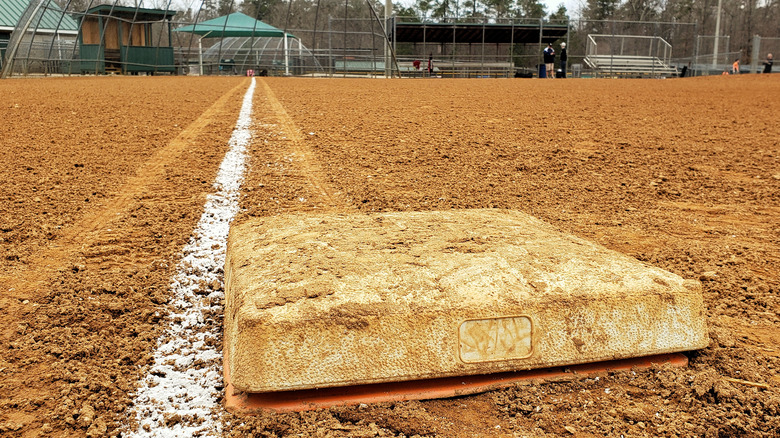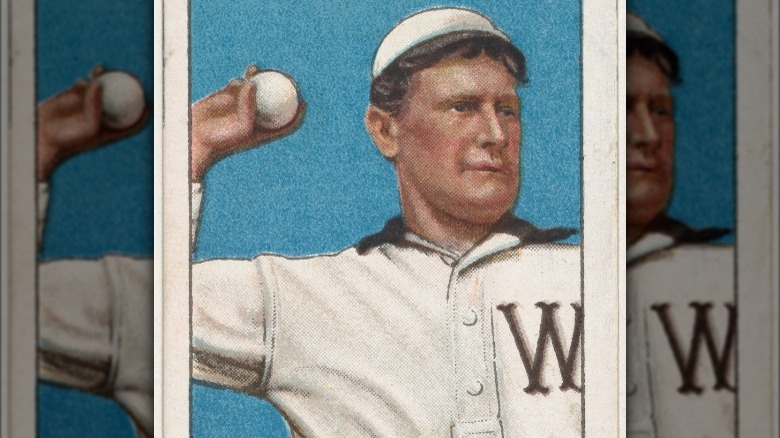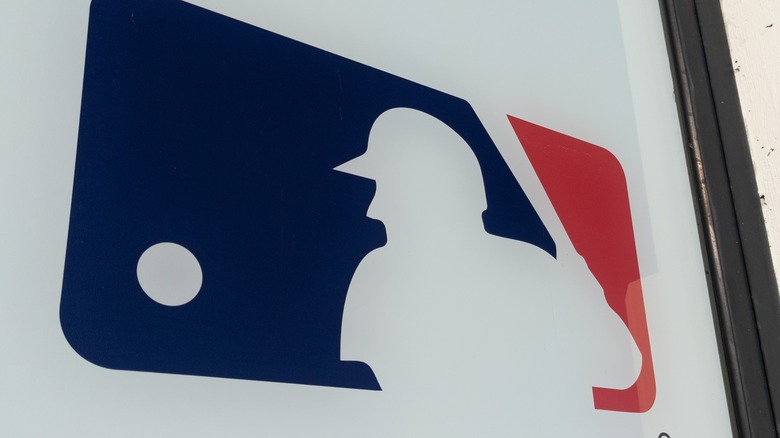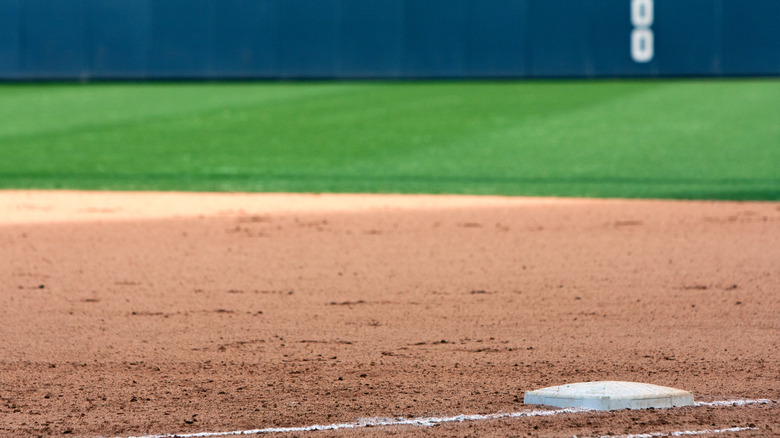Is Stealing First Base In Baseball Actually Possible?
Stealing a base is one of the few instances where stealing isn't frowned upon by society or the criminal justice system. Sure, the opposition isn't too fond of it, but it's the kind of play that will certainly get the fans into the game. According to Baseball Reference, Hall of Famer Rickey Henderson is Major League Baseball's all-time leader in stolen bases, with 1,406 to his name on 1,741 attempts, enough to earn him the nickname The Man of Steal. Henderson also has the second-most stolen bases in a single season, with 130, behind Hugh Nicol's mark of 138, which has stood since 1887 (via Baseball Reference).
Of those 1,406 stolen bases to Henderson's credit, 1,080 of them were to second base. It's riskier to steal third base, but Henderson still managed to get it done 322 times (via Nick Lozito). Stealing home is even more difficult, so much so that Henderson only did it successfully four times in his entire 25-year career.
Of course, there's one other base on a baseball diamond. According to SB Nation, despite stealing more bases than anyone in the history of the sport, Rickey Henderson never stole first base. But is that even possible?
Germany Schaefer stole first base
In the early 20th Century, Major League Baseball was still working on putting together a set of rules. It was kind of a fly-by-the-seat-of-the-pants endeavor, but it's impossible to anticipate every single situation that could come up during a game. Herman "Germany" Schaefer came along and provided just that kind of situation.
On August 4, 1911, Herman "Germany" Schaefer and the Washington Senators were hosting the Chicago White Sox, per Baseball Reference. It was the bottom of the ninth inning, and Schaefer was on first base, with Washington center fielder Clyde Milan on third. Schaefer and Milan decided to try a double steal, where Schaefer would dash to second base in hopes of getting White Sox catcher Fred Payne to throw to second, freeing up Milan to sprint home, which would win the 0-0 game. Schaefer stole second, but Payne didn't bite.
So, Schaefer wanted to give the double steal another whirl, but with Milan on third, the only open base was first base, so Schaefer trotted back to first. White Sox manager Hugh Duffey ran out of the dugout to argue Schaefer's move to first base, which caused confusion and allowed Schaefer to once again steal second base. Meanwhile, Milan attempted to dash home, but was caught in a run down and tagged out to end the inning, Still, the official scorer credited Schaefer with having successfully stolen first base. There are legends that this was the second time Schaefer stole first base, with another instance coming several years earlier in a game against the Cleveland Indians, but there's no record of this actually happening, per SABR.
The legality of stealing first
Baseball isn't a sport known for doing things quickly, and according to SB Nation, it took several years after Schaefer stole first to institute a rule against it. Still, the rule put in place wasn't a water-tight piece of legislation that says something like "stealing first is illegal." There's some room for interpretation. Today, after having legally taken possession of a base, a player is deemed out if "he runs the bases in reverse order for the purpose of confusing the defense or making a travesty of the game," according to Major League Baseball's 2021 rulebook – specifically, Rule 5.09 (b)(10).
It does include the caveat that if a player reaches the next base, but thinks the ball was caught — requiring the runner to return to the previous base and tag up before advancing — or that the other team may have employed something along the lines of a hidden ball trick, they're allowed to return to the previous base. However, they can be tagged out en route to the previous base, but are deemed safe upon reaching the previous base. Yes, it's a little confusing, and sometimes even the professionals find themselves scratching their heads.
Jean Segura stole first base in 2013 without trying to
On April 19, 2013, during a game between the Chicago Cubs and Milwaukee Brewers, Brewers shortstop Jean Segura (above) stole first base in way that perplexed the entire baseball world. According to Baseball Reference, it was the bottom of the eighth inning, with the Brewers ahead 5-4. Segura led off and reached base with a single. He then stole second base with left fielder Ryan Braun at the plate. Braun's at bat ended with him being walked, leading to Milwaukee having runners on first and second.
Once again, a double steal was a factor in what transpired. This time, the Brewers wanted to move both runners into scoring position, with Segura stealing third and Braun taking second. However, Cubs pitcher Shawn Camp caught them in the act and threw to third, which made Segura slam on the brakes and retreat back to second base. By the time he got there, though, Braun was standing on the bag. Rule 5.06 (a)(2) of the MLB Rulebook indicates that if two runners wind up on the same base, the following runner is deemed out. This would've been Braun, but adding to the confusion was that Segura was tagged. Assuming he was out, the Brewers shortstop began trotting back to the Brewer's dugout along the first base line, when the team's first base coach told him to wait it out. Braun was called out, but Segura remained on first base until he was caught once again trying to steal second several batters later.
Major League Baseball tested a rule that allowed batters to steal first base
While there are several rules in place that make stealing first base illegal, Major League Baseball has toyed with making it legal. In 2019, Major League Baseball partnered with the Atlantic League — an independent minor league — to experiment with some proposed rule changes (via MLB). Later in the season, more rule changes were tested, including one that allowed batters to steal first base. According to MLB, "Batters may 'steal' first base on any pitch not caught in flight (the batter can be thrown out if he attempts to run)." Essentially, it was now possible to steal first on a wild pitch just like any other base.
The first player to do this successfully was Tony Thomas of the Southern Maryland Blue Crabs. With a count of 0-1, a pitch snuck through Lancaster Barnstormers catcher Anderson De La Rosa, which allowed Thomas to dash 90 feet down to first base. As can be seen in the video posted on the Southern Maryland Blue Crabs Twitter account, it took Thomas a second to remember that the rule was in place, but upon reaching first, he had not only made it safely on base but had also earned his place in the baseball history books. However, according to The Boston Herald, when Major League Baseball once again used the minor leagues as a testing ground for new rules in 2021, batters being allowed to steal first was not one of them.




